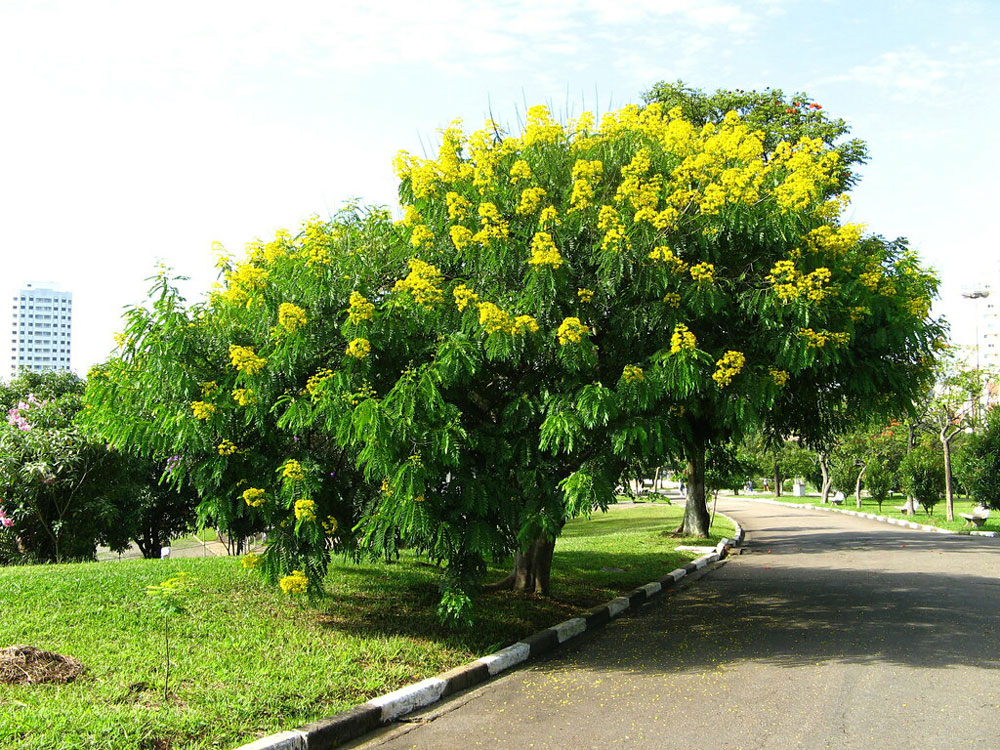Spectacular Cassia Tree

Senna spectabilis
Summary
Scientific Classification
Kingdom: Plantae
Division: Angiosperm
Class: Dicotyledonae
Order: Fabales
Family: Fabaceae
Genus: Senna
Species: S.spectabilis
Scientific Name: Senna spectabilis (DC.)H.S.Irwin & Barneby.
Common Names:
English: Spectacular cassia, mhomba (Kiswahili), mwenu (Kikuyu); Cassia, pisabed, yellow shower.
Description:
- Habit and Habitat: Senna spectabilis is a small, rounded deciduoustree, 7-10 m (max. 15) tall, and 30 cm in trunk diameter, with a spreading crown. Bole is short, tends to fork near the ground and is wide spreading with drooping, leafy branches. Bark smooth, grey with horizontal markings, many warts and short fissures, rougher with age with broad vertical bands of large lenticels (corky pores).
- Distribution: Senna spectabilis is a common garden ornamental plant that also invades; forest margins, savanna, riverbanks, roadsides, waste ground and plantations.
- Morphology:
Leaf: Alternate, up to 40 cm, once-compound (pinnate) with 4-15 (max. 19) pairs of leaflets, each up to 7.5 cm; petiole 3-4 cm; rachis10-20 cm (max. 35); stipules paired, threadlike, linear falcate, early caducous, about 1 cm long.
Inflorescence: The inflorescences of Senna spectabilis are terminal and lateral many-flowered panicles. These inflorescences are large.
Flower: The bright yellow flowers are 1.5 inches wide but appear in dense racemes up to two feet long. Sepals are orange-yellow, unequal, ovate to circular, 5-7 mm long. Petals are yellow, spoon shaped, unequal, broadly to narrowly obovate, 2-3.5 cm long.
Androecium: anthers opening by apical pores and a slit. Stamens are 7 large and 3 small sterile.
Gynoecium: Pistil slender, curved, hairless.
Fruit: flattened pods ending in a short, narrow point, hard, not splitting open or slightly on 1 side; pendulous, more or less terete or slightly compressed, glabrous, glossy, annulate-septate, 18-25 (max. 30) x 1 cm, turning from green to black; with many cross walls about 3 mm or less apart, the seeds in separate compartments.
Seed: Seeds 2.5 cm each division, 50-70, suborbicular, flattened, brown, about 5 mm in diameter; septae papery. - Propagation: Seed.
- Importance:
The plant has been used to treat ringworm and skin diseases. The plant can be grown for shade and as a boundary market. - Location: Hostel area.
 Trees of GSS Project supported by Makerspace Belgaum Website concept and designe by
Trees of GSS Project supported by Makerspace Belgaum Website concept and designe by